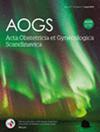Assessment of childbirth experience over time—A prospective cohort study
Abstract
Introduction
A woman's childbirth experience is multifaceted and has a great impact on not only the woman, but also the family's health and well-being. Changes in childbirth experience over time have been evaluated with a variety of instruments, at different time points, and with inconsistent findings. In Sweden, the rating of birth experience is routinely collected after birth, but it is still unknown which time point is preferred from a clinical perspective. The primary aim was to investigate changes in childbirth experience over time from childbirth to 6 months postpartum, assessed by both a single and a multi-item instrument. A secondary aim was to test the correlation between these instruments.
Material and Methods
In a prospective cohort study, 320 women were recruited from two Swedish hospitals. Study participants completed a survey at the maternity ward after giving birth, and again three and 6 months postpartum, rating their overall childbirth experience on a single item 10-point numeric rating scale (NRS) and a multi-item instrument, the Childbirth Experience Questionnaire 2 (CEQ2), encompassing four known dimensions of childbirth: Perceived safety, Own capacity, Participation and Professional support. Changes in childbirth experience (NRS and CEQ2) over time were analyzed using the Friedman test. NRS ratings were analyzed in relation to CEQ2 dimensions with Spearman's correlation.
Results
Overall childbirth experience rated using NRS did not change over time. The total CEQ2 score decreased significantly from childbirth to 6 months postpartum (p < 0.001). This change was driven by decreased scoring of the domains Participation and Professional support. The correlations between NRS and CEQ scores were consistent over time, with a moderate to weak correlation of NRS with Participation and Professional support.
Conclusions
Women perceive their birthing experience more negatively over time when assessed using the CEQ2 questionnaire, but this was not captured by a single-item question assessing overall childbirth experience.




 求助内容:
求助内容: 应助结果提醒方式:
应助结果提醒方式:


